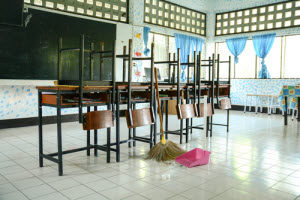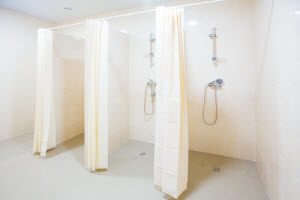Are you looking for ways to make your facility greener and eco-friendlier? Newer buildings have a great start with using LEED-certified materials and newer practices that can reduce the environmental impact of the facility. But if your facility has already been built before the green movement, you don’t have to worry. There are ways that you can make your facility eco-friendlier. Here are a few steps on how to reduce your facility’s carbon footprint.
Get the Most Out of Your Energy
 One of the most efficient ways to reduce your facility’s carbon input is to either reduce your energy use (which is next to impossible) or find ways to use less energy. Any rooms that aren’t being occupied shouldn’t have any electrical equipment running. This includes computers, TVs, and even lights. However, if you don’t think you can run your facility in partial darkness, you may want to invest in solar panels to make your facility a renewable energy source.
One of the most efficient ways to reduce your facility’s carbon input is to either reduce your energy use (which is next to impossible) or find ways to use less energy. Any rooms that aren’t being occupied shouldn’t have any electrical equipment running. This includes computers, TVs, and even lights. However, if you don’t think you can run your facility in partial darkness, you may want to invest in solar panels to make your facility a renewable energy source.
Keep Your HVAC System Well Maintained
Did you know that heating, ventilation, and air conditioning are responsible for 40% of all carbon emissions? In order to keep these emissions low, you need to make sure that you keep up with maintenance on your HVAC system to ensure that it’s running as efficiently as possible. You can also reduce these emissions on especially nice days by opening your windows and turning the system off. That way, fresh air pumps through your facility without any emissions.
Use Green Building Materials
 If there’s a remodel or renovation project coming up in your facility, you should utilize green building materials to add to your facility to give it a greener edge. Look for any recycled materials to use in your building. If you have a restroom project in the near future, consider using HDPE (high-density polyethylene) plastic for your stalls and partitions. This material is highly durable; impact-, dent-, and graffiti-resistant; and 100% sustainable. Not to mention, HDPE outlasts most other plastic materials, and requires very little maintenance and upkeep.
If there’s a remodel or renovation project coming up in your facility, you should utilize green building materials to add to your facility to give it a greener edge. Look for any recycled materials to use in your building. If you have a restroom project in the near future, consider using HDPE (high-density polyethylene) plastic for your stalls and partitions. This material is highly durable; impact-, dent-, and graffiti-resistant; and 100% sustainable. Not to mention, HDPE outlasts most other plastic materials, and requires very little maintenance and upkeep.
Use Low-Energy Lightbulbs
While it may seem like a tedious process, it certainly helps reduce the energy bill. Using LED lights can greatly reduce your energy consumption because they only use 10 watts, while bulbs like incandescent lights use up 60 watts. If you do the math, you’ll see huge savings when the energy bill comes in.
Boost Your Recycling
A lot of facilities fall short in this category, but you don’t have to. Consider getting more recycling bins for your building and have them placed in convenient high-traffic areas. Educate the occupants on the benefits of recycling, and even what can be recycled. By implementing a rejuvenated recycling plan, your facility can help pave the way to a greener future.
Are you ready to start reducing your facility’s carbon footprint? Check out this eBook, Sustainable Building Products: How to Make Your Facility Eco-Friendly from Top to Bottom, from us at Scranton Products.

 It’s important to give your hallways a thorough cleaning before the school year begins. Most germs and bacteria are picked up through foot traffic, and more often than not, those germs end up in the hallways. Utilizing a strong disinfectant cleaner can help combat the spread of germs. However, there are green cleaning products on the market that can help you achieve germ removal and still keep harmful chemicals from contaminating the air.
It’s important to give your hallways a thorough cleaning before the school year begins. Most germs and bacteria are picked up through foot traffic, and more often than not, those germs end up in the hallways. Utilizing a strong disinfectant cleaner can help combat the spread of germs. However, there are green cleaning products on the market that can help you achieve germ removal and still keep harmful chemicals from contaminating the air. Be sure to check your air and water quality to see if it’s up to code. Find a water tester in the area to help you conduct these routine tests so you can see where the quality lies. If the result isn’t as high as you’d hoped, consider replacing the filtration system. When it comes to air, there are several ways that you can do your part increase the quality. Consider getting indoor plants, utilize
Be sure to check your air and water quality to see if it’s up to code. Find a water tester in the area to help you conduct these routine tests so you can see where the quality lies. If the result isn’t as high as you’d hoped, consider replacing the filtration system. When it comes to air, there are several ways that you can do your part increase the quality. Consider getting indoor plants, utilize  Get started by looking for the question(s) that’s most relevant to you so you can learn the answer!
Get started by looking for the question(s) that’s most relevant to you so you can learn the answer!